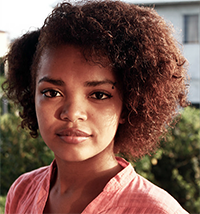DURING my formative years at high school, there were many questions I had regarding sex. Many things were unclear or were cloaked in the culture of shame that often accompanies sex. My family never had a sit-down with me to explain the “Birds n Bees,” I was just expected to know. Everything I knew however was gathered from unrealistic romance novels or awkward, televised fumbling that was labelled as ‘sex.’
So, of course I still had questions and so did my peers. Unfortunately, the Internet at that time was not something that was available to me and “sex education” was still an alien concept, because all we were taught were abstinence-only approaches. There were never any ‘condom-on-the banana’ demonstrations or even conversations on what a condom was or why we should use them.
After a pregnancy that kept me out of school for a year, I re-entered the school system at a private institution. They also did not have a comprehensive sex education programme. During the select science courses I had chosen however, we occasionally touched on and actually had conversations concerning sex and our bodies. I was already a mother of one before I by happenstance (through science classes rather than direct addressal) learnt about sex and my body and even here, I did not learn much.
So, I think it would be safe to say that sex education for me, as a young woman, was disappointing and inadequate. As a young bisexual woman however, sex education for me was not only disappointing, it was non-existent, because the curriculum excludes anything that is not considered hetero.
Recently, my ever increasingly favourite magazine Teen Vogue, did a piece on anal sex. With an opening saying, “When it comes to your body, it’s important that you have the facts. Being in the dark is not doing your sexual health or self-understanding any favors,” the piece takes a (LGBT friendly) clinical approach to explaining safe anal sex.
The backlash was swift and brutal, with many saying the magazine was promoting sodomy amongst teens. Editor Phillip Picardi in response to the outrage shared his own history as a young gay male who did not receive sex education and who as such was unequipped to make smart and safe sexual decisions. He talked about how he was never taught about condom usage and ended up having sex with an HIV positive person. He would find out that the person was positive afterward.
It was only after this experience that Picardi was able to access the sex education with which he had never been provided. Due to his experience, he wanted LGBT youths to know that when one talks about safe sex and prevention, it should not always be from a heterosexual standpoint, because ignoring the minority can be dangerous.
According to the Centre for Disease Control (CDC), lesbian and bisexual teens experience twice the risk of unintended pregnancy than their heterosexual peers. This is due to societal/personal pressures and lack/misinformed of knowledge regarding sex. The CDC also noted that the HIV infection rate is rising rapidly among those between the ages of 13 and 24, particularly among gay youth, who are having unprotected anal sex. In society’s bid to promote heteronormative ideas, they perpetuate dangerous environments and spaces for those not neatly fitting to the identity boxes they have been handed from birth.
In essence, a programme which is ideally supposed to address sex, sexuality and all the issues concerning that is one that is drenched in purity politics and anti-choice rhetoric. This is despite the large evidence arguing against the effectiveness of abstinence-only education. Only last year, the Guyana Responsible Parenthood Association conducted a ‘snap survey,’ which focused on sexual trends among the adolescent and youth populations in the country. Carried out in eight of Guyana’s 10 administrative regions, it was found that more than 50 percent of youths still in school are sexually active.
(kaieteurnewsonline.com) Sex education leaves a lot to be desired in general. However, while the information heterosexuals receive in it is miniscule, when it comes to LGBT students, this information is practically non-existent. Sex education currently spreads heteronormative ideas regarding sex and in doing so erases LGBT persons and their right to access of information.
What the lack of sex education does is help to perpetuate the miseducation of LGBT persons and safe-sex practices. The fact that LGBT persons do not have sex the same way as heterosexuals is an issue that is cloaked in hate and embarrassment. Particularly when it comes to Men who have Sex with Men, the education of queer people in the area of sex is paramount to our society’s progression and diminishing of sexually transmitted diseases.
We do not need to rewrite policies to ensure the inclusivity of LGBT students in sex education. The education sector has a responsibility to ensure students are provided with a safe and inclusive education. Access to non-judgmental and accurate information should never be a point of contention.




.png)








